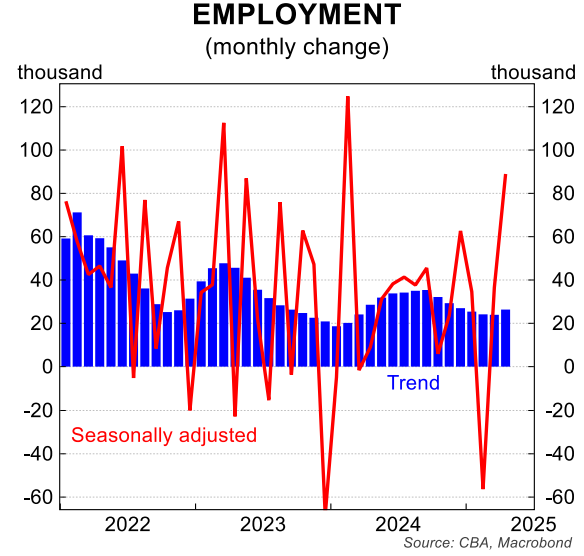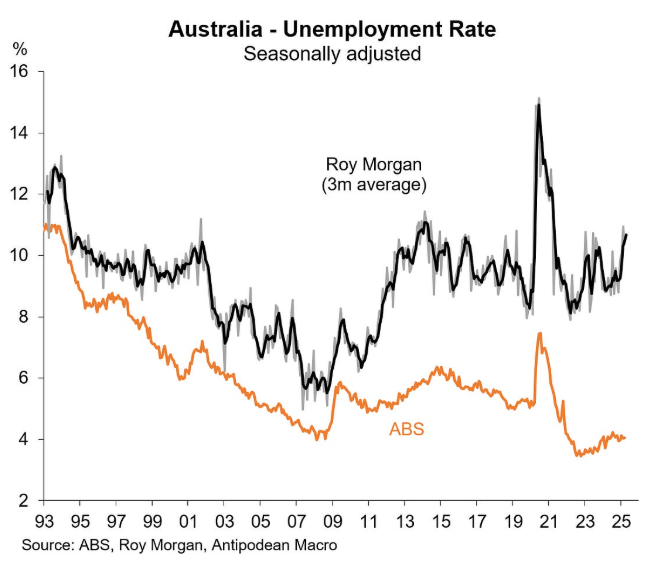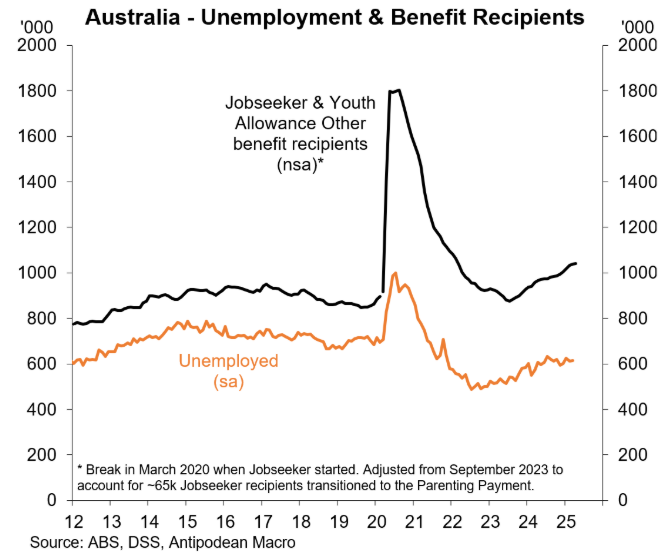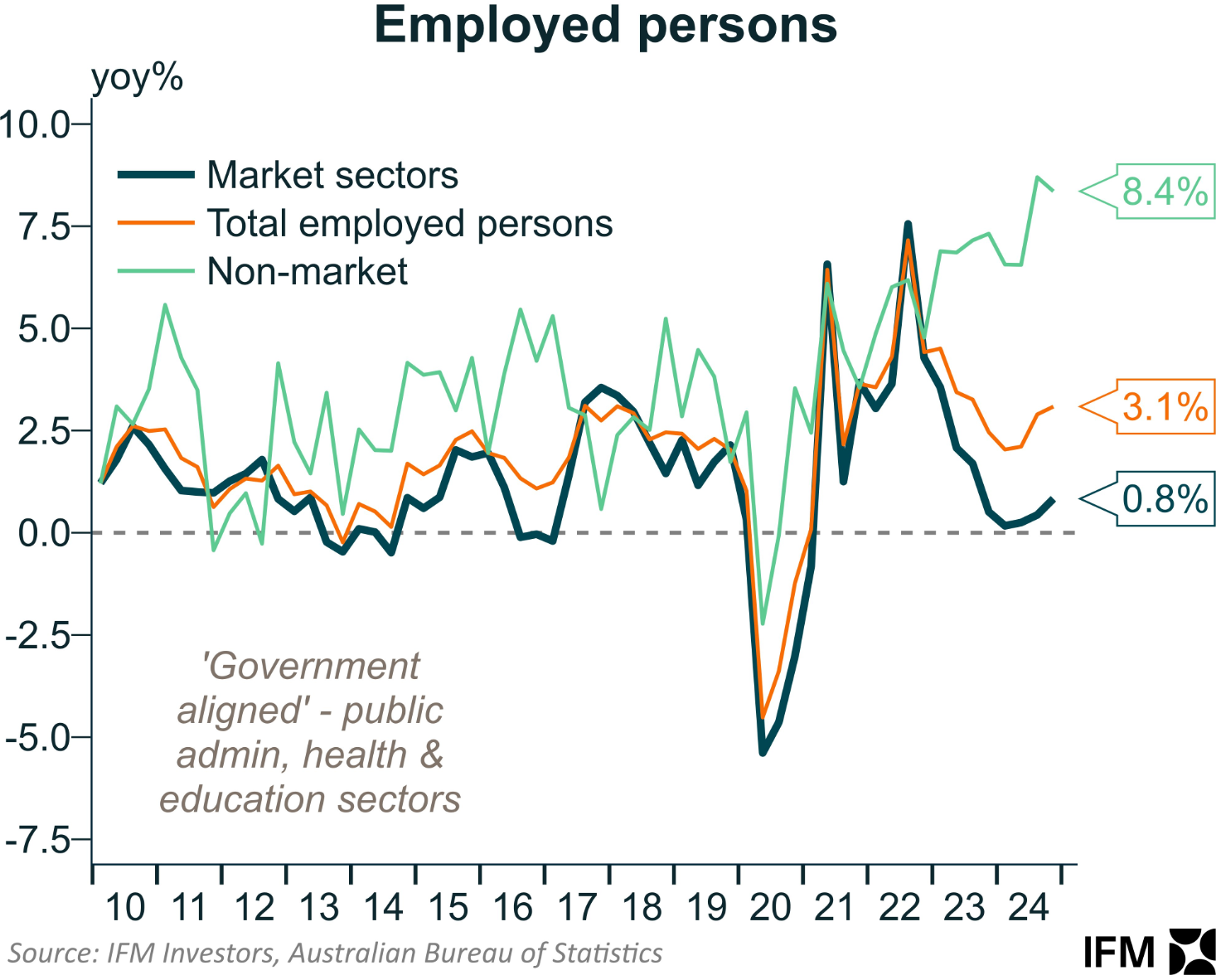Australia’s labour market has shown remarkable resilience.
Last week’s April labour force release from the Australian Bureau of Statistics (ABS) reported strong (89,000) employment growth, well above the consensus forecast of 22,500.

Trend job growth also increased slightly, with 26,300 jobs created over the month.
The unemployment rate was steady at 4.1% due to a lift in the participation rate to 67.1%, up from 66.8%.
Seasonal adjustment challenges with the Easter ‘super holiday’ to the ANZAC period might have impacted the result.
While Australia’s labour market remains solid overall, other measures suggest it is slowly bleeding out.
As illustrated below by Justin Fabo from Antipodean Macro, Roy Morgan’s alternative labour market survey shows that unemployment has trended higher, decoupling from the official ABS measure:

The various measures of job ads and vacancies have also deteriorated, albeit mostly at higher levels than the pre-pandemic period.

Fabo also showed that “the number of Jobseeker benefit recipients in Australia continued to gradually increase in April. The Jobseeker numbers typically lag the ABS unemployment figures but are much smoother and provide a cross-check”:

The above data suggest that Australia’s labour market is not as strong as indicated by the high unemployment rate of 4.1%.
Moreover, conditions are far worse in the private sector, given that most of Australia’s recent job growth has come from the non-market sector, led by the NDIS.

The RBA should take comfort in these broader measures when deciding whether to cut interest rates.

